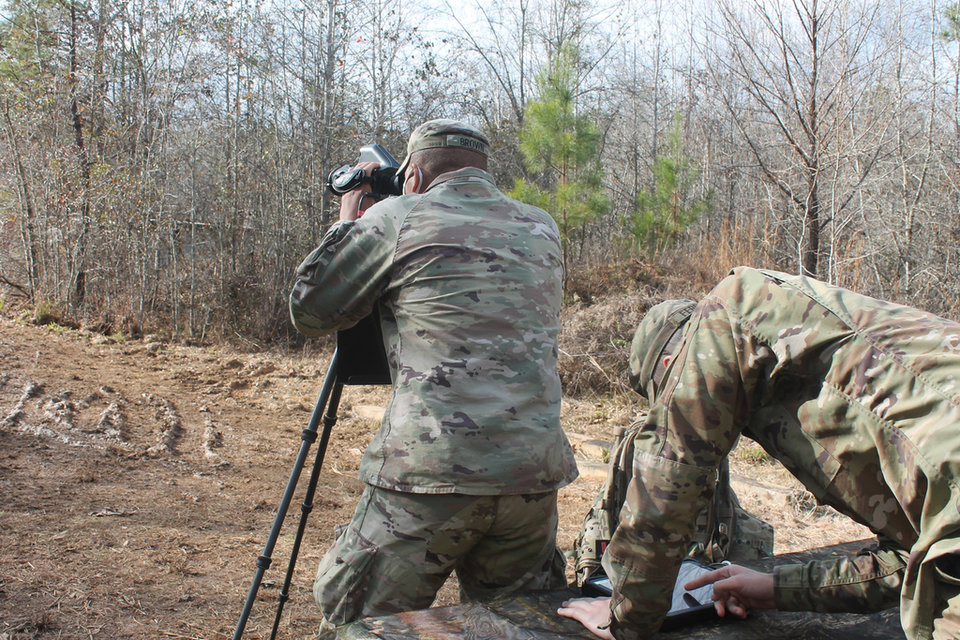Weapon systems
AI on the battlefield: Rafael’s Fire Weaver system
Rafael’s Fire Weaver sensor-to-shooter system has undergone successful trials with the German and US militaries and been selected by the Israeli Defence Forces (IDF). Harry Lye looks into the systems and finds out how its artificial intelligence engine can help commanders make better decisions on the battlefield.
In January, the US Army conducted an operational assessment of Rafael’s Fire Weaver sensor-to-shooter system as part of its Army Expeditionary Warrior Experiment 21 (AEWE) held at Fort Benning.
The trial followed a number of successes for the artificial intelligence (AI) enabled system, including a demonstration for the German Bundeswehr and the Israeli Ministry of Defense acquiring the system for use by the IDF’s ground forces in early 2020.
The system uses AI decision-aid software and 3D terrain maps to create a fully digital common operational picture for operators, bringing together sensors and personnel and shortening the time it takes to acquire information and engage targets.
Rafael says the system is integrated as an ‘open and modular software application’ which can work with existing battle management systems and tactical computing devices used by personnel.
It is designed to improve situational awareness for ground forces and maximise the ability to operate in GPS-denied environments. Commenting on the US Army trial, Rafael described Fire Weaver as ‘a key enabler’ to increasing the lethality of US infantry formations operating in multi-domain operations.
Rafael said that during the trials, soldiers using Fire Weaver were able to acquire targets and engage them much faster than they would have without the system thanks to its AI capabilities.
Target and weapons pairings
The system links sensors and shooters within an area, enabling the AI algorithms to provide what Rafael calls ‘target and weapon pairings’. In practice, this means that the system can essentially spot a threat and then recommend the best weapon to engage it.
These pairings are created using predetermined rules set at commander level and keep a human in the loop for any decision to fire lethal effects.
During the AEWE trial, US Soldiers received half a day’s training in the operation of the system and demonstrated its capabilities to US Army commands including Army Futures Command, Combat Capabilities Development Command, and Training and Doctrine Command.
Fire Weaver provides the US Army infantry a marked advantage in overmatch.
At the time of the demonstration, team lead of the company’s US subsidiary Rafael Systems Global Sustainment, retired Lieutenant General Joe Anderson, said: “Fire Weaver provides the US Army infantry a marked advantage in overmatch.
“This proven and capable technology is available today for high manoeuvrability, survivability and lethality. We appreciated the opportunity to demonstrate Fire Weaver at AEWE 21 and look forward to working with the army on modernisation challenges against our future and peer threat adversaries.”
Rafael demonstrated Fire Weaver as part of a broader suite of demonstrations that included its BNET IP Software Defined Radio and SPIKE SR Precision Strike shoulder-fired missile. The former was also demonstrated to the German Armed Forces.
Fire Weaver: step by step
In a promotional video, Rafael outlines an engagement enabled by Fire Weaver, describing how the system links potential targets directly to potential effector sights, which could be anything from an attack helicopter to a missile launcher. Once targets are marked, lethal effects can be launched simultaneously from multiple effectors.
The process of using the system begins with sensors collecting information on the operating environment, identifying and then classifying potential targets within a given area. Once a target is classified, this information is shared across the system using the radio networks that support operations, allowing anyone in a formation using Fire Weaver to see where the potential threat is.
Once potential threats are classified, the system begins working to identify which effectors in the area would be best-suited to engaging the targets. These decisions are based on factors including line-of-sight, location and ammunition status.
When an effector is selected, the target is automatically handed off to the relevant shooter’s sight and they can then fire the weapon. Targets can be identified using geographical coordinates, laser designation or electro-optical pixels.

// Fire Weaver is designed to improve situational awareness for ground forces, including in GPS-denied environments. Credit: Rafael
German Army studies
In January, Rafael announced it had completed the second phase of its work with Germany as part of the Bundeswehr’s ‘Transparent Battlefield study’, which involved a demonstration of the BNET advanced SDR communication system and Fire Weaver at Paderborn.
During the demonstration, live traffic from the Pegasus drone and Fire Weaver system was carried across the BNET radio network. The Transparent Battlefield study aims to pull together information from uncrewed aerial systems and ground vehicles to develop a live 3D picture of operations.
It will provide a common visual language among different types of units, not only from the Bundeswehr, but also from allied forces.
Commenting on the work with Germany, Rafael’s C3I directorate vice president and head Yoav Wermuth said: “Today's battlefields are undergoing far-reaching changes that affect the operational needs of land, air and naval forces, with newly emerging real-time applications, such as sensor-to-effector cycle closure systems.
"Rising to meet these challenges, and relying on decades of experience in the development of C4I solutions, Rafael has developed the BNET Family, enhanced with patented technology, and the Fire Weaver, a high-precision, three-dimensional, GPS-independent common visual language system.
“Integration of these systems into the Bundeswehr will lead to a number of significant changes - it will provide a common visual language among different types of units, not only from the Bundeswehr, but also from allied forces, which share the same threats and missions, connecting multiple sensors and shooters on one single ‘flat’ network."
// Main image: Rafael demonstrated Fire Weaver with its SPIKE SR Precision Strike shoulder-fired missile. Credit: Rafael